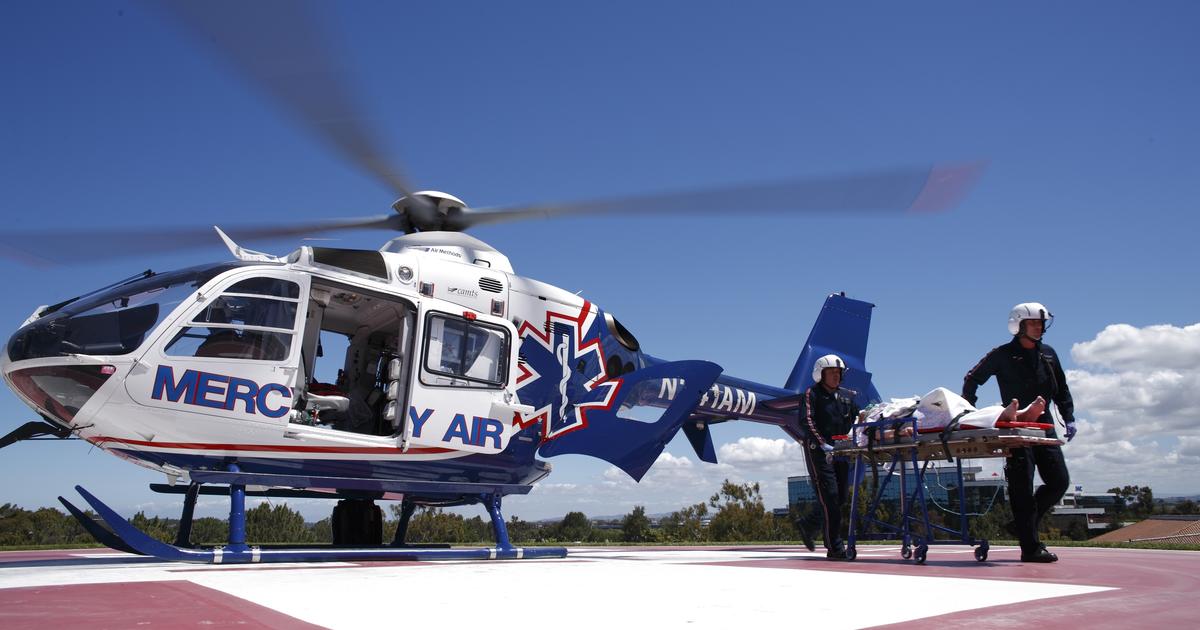So, you find yourself in a difficult situation where you or a loved one requires air ambulance services, and now you’re faced with the daunting task of figuring out the confusing world of air ambulance bills. Let me tell you, you’re not alone. Many people are caught off guard by the exorbitant costs and complex billing systems associated with air ambulance transportation. That’s where patient advocate services come in. These dedicated professionals specialize in navigating the labyrinth of air ambulance bills, working on your behalf to negotiate lower fees, dispute excessive charges, and help you understand your options. In this article, we’ll delve into the crucial role of patient advocate services in helping you navigate through the murky waters of air ambulance bills. Strap in and let’s get started!
The Cost of Air Ambulance Services
Air ambulance services are essential for individuals in need of urgent medical transportation, especially in situations where time is of the essence. However, the cost of these services can be quite overwhelming. Understanding the factors that contribute to the high price tag and the importance of insurance coverage is crucial when navigating the complex world of air ambulance bills.
Understanding the high price tag
Air ambulance services involve a range of specialized equipment, highly trained medical personnel, and the use of aircraft that are equipped to handle medical emergencies. All of these factors contribute to the high cost of air ambulance services. Additionally, the operational expenses, including fuel, maintenance, and insurance, as well as the need to be available 24/7, further drive up the price.
Factors that contribute to the cost
Several factors contribute to the overall cost of air ambulance services. Distance plays a significant role, as longer flights require more fuel and incur additional expenses. The type of aircraft used, the medical equipment required, and the level of care needed also impact the cost. Moreover, the demand for air ambulance services, limited number of providers, and the need for specialized and highly trained medical personnel add to the expenses.
Importance of insurance coverage
Having insurance coverage is crucial when it comes to air ambulance services. Unfortunately, many insurance policies only cover a portion of the total cost or have strict limitations on coverage. In some cases, individuals find themselves with high out-of-pocket expenses due to insurance denials or coverage gaps. Understanding your insurance policy and seeking appropriate coverage for air ambulance services can save you from significant financial burdens.
Challenges in Dealing with Air Ambulance Bills
While navigating air ambulance bills can be daunting, several challenges make it even more difficult. Lack of transparency in billing, difficulty in understanding medical codes, and insurance denials and appeals are common hurdles individuals face when confronted with air ambulance bills.
Lack of transparency in billing
One of the major challenges faced by individuals dealing with air ambulance bills is the lack of transparency in billing. It is often difficult to decipher what services were provided and how much they cost. Invoices may contain vague descriptions and complex medical codes, making it challenging to understand the breakdown of charges.
Difficulty in understanding medical codes
Medical codes are used to describe the different procedures, treatments, and services provided during an air ambulance transport. However, understanding these codes can be extremely challenging for individuals without medical backgrounds. Misinterpretation or lack of understanding of medical codes can lead to confusion when trying to navigate and negotiate the bills.
Insurance denials and appeals
Insurance denials are another common challenge individuals face when dealing with air ambulance bills. The insurance company may deny coverage for various reasons, such as the lack of medical necessity, out-of-network providers, or the absence of pre-authorization. Appealing insurance denials can be a complex and time-consuming process, requiring extensive documentation and evidence to support the claim.
What are Patient Advocate Services?
Patient advocate services can be a valuable resource when it comes to navigating the often complex and overwhelming world of air ambulance bills. These services aim to support and guide individuals in understanding their medical bills, negotiating with insurance companies, and exploring financial assistance options.
Overview of patient advocate services
Patient advocate services are dedicated to helping individuals understand and manage their medical bills. These professionals are well-versed in the healthcare industry and have extensive knowledge of medical billing practices and insurance policies. They provide guidance, support, and expertise to ensure that individuals receive fair and accurate billing.
Roles and responsibilities of patient advocates
Patient advocates play a vital role in helping individuals facing air ambulance bills. They review medical bills and insurance claims, identify errors or discrepancies, and work to resolve billing issues. Patient advocates also assist in negotiating with insurance companies, healthcare providers, and collection agencies on behalf of the individual. They ensure that individuals receive the best possible outcome in terms of cost reductions, payment plans, or insurance coverage.
How patient advocates help in dealing with air ambulance bills
Patient advocates provide valuable assistance when it comes to air ambulance bills. They have a deep understanding of the billing process and can help individuals navigate through complex medical codes, decipher invoices, and understand the breakdown of charges. Patient advocates can also negotiate with insurance companies to ensure proper coverage and assist with filing appeals if insurance claims are denied. Their expertise and guidance can help individuals achieve the best possible financial outcome.
Choosing the Right Patient Advocate
When seeking the assistance of a patient advocate for air ambulance bills, it is essential to choose the right one. Taking the time to research patient advocate services, evaluate their expertise and experience, and check for certifications and professional affiliations can ensure that you receive the best possible assistance.
Researching patient advocate services
Start by researching different patient advocate services in your area. Look for reputable organizations or individuals who specialize in medical billing advocacy. Read reviews and testimonials from previous clients to gauge their effectiveness and reliability. Consider reaching out to healthcare professionals or trusted sources for recommendations.
Evaluating the expertise and experience of patient advocates
When selecting a patient advocate, it is crucial to evaluate their expertise and experience in dealing with air ambulance bills specifically. Look for advocates who have a track record of success in negotiating medical bills and resolving insurance issues. Knowledge of medical coding, insurance policies, and the air ambulance industry is essential for effective advocacy.
Checking for certifications and professional affiliations
Certifications and professional affiliations can serve as an indicator of a patient advocate’s qualifications and commitment to high standards. Look for advocates who hold certifications such as Certified Medical Reimbursement Specialist (CMRS) or Certified Professional Medical Auditor (CPMA). Additionally, check if they belong to professional organizations, such as the Alliance of Claims Assistance Professionals (ACAP) or the National Association of Healthcare Advocacy Consultants (NAHAC).
Working with a Patient Advocate
Once you have chosen a patient advocate, the next step is to initiate the process by having an initial consultation and assessment. This is followed by developing a personalized billing strategy and allowing the patient advocate to negotiate with insurance companies and healthcare providers on your behalf.
Initial consultation and assessment
During the initial consultation, the patient advocate will gather information about your air ambulance bills and insurance coverage. They will review the invoices, medical codes, and insurance policies to gain a comprehensive understanding of your situation. This assessment allows the patient advocate to tailor their approach and develop a personalized strategy to tackle your air ambulance bills effectively.
Developing a personalized billing strategy
After the assessment, the patient advocate will develop a personalized billing strategy based on your specific needs and circumstances. This strategy may include identifying potential billing errors, negotiating with insurance companies, exploring financial assistance programs, or considering fundraising options. The patient advocate will work closely with you to ensure that the strategy aligns with your goals and preferences.
Negotiating with insurance companies and healthcare providers
One of the primary responsibilities of a patient advocate is to negotiate with insurance companies and healthcare providers on your behalf. They will communicate with the relevant parties, provide evidence to support your case, and work towards a fair and favorable resolution. Patient advocates are skilled negotiators, experienced in dealing with insurance companies and healthcare billing departments, ensuring that your interests are represented effectively.
Navigating Insurance Claims and Appeals
Understanding your insurance policy, filing an air ambulance claim, and appealing insurance denials are critical steps in navigating the complex world of air ambulance bills. Patient advocates can provide guidance and support throughout this process.
Understanding your insurance policy
Before filing an air ambulance claim, it is essential to thoroughly understand your insurance policy. Review the coverage and limitations related to emergency medical transportation, specifically air ambulance services. Pay attention to requirements such as pre-authorization, network providers, and the medical necessity criteria. This understanding will help you navigate the insurance claims process more effectively.
Filing an air ambulance claim
To initiate the insurance claims process for air ambulance services, gather all necessary documentation, including medical records, invoices, and any supporting documentation. Submit the claim to your insurance company within the designated timeframe, ensuring that you provide all required information. Patient advocates can assist in correctly completing the claim form, attaching the requested documents, and addressing any additional requirements.
Appealing insurance denials
In the event of an insurance denial, it is crucial to file an appeal promptly. Work with your patient advocate to compile all necessary documentation, including medical records, a detailed explanation of benefits, and supporting evidence of medical necessity. The patient advocate will help craft a persuasive appeal letter, presenting a strong case to the insurance company. They will guide you through the entire appeals process, including any follow-up communications or additional information required.
Financial Assistance and Fundraising Options
When faced with high air ambulance bills, exploring financial assistance programs and fundraising options can provide much-needed relief. Patient advocates can help identify available resources and guide you through the process of accessing financial assistance.
Exploring financial assistance programs
There are various financial assistance programs available to individuals in need of air ambulance services. These programs may be offered by government agencies, non-profit organizations, or specific hospitals and healthcare systems. Patient advocates can help you identify and navigate these programs, ensuring that you meet the eligibility criteria and submit the necessary applications.
Tips for successful fundraising campaigns
Fundraising can be an effective way to offset the costs of air ambulance services. Patient advocates can provide valuable guidance and tips for organizing successful fundraising campaigns. They can help you create compelling fundraising stories, leverage social media platforms, and engage with the community to maximize donations. Patient advocates can also assist in setting up crowdfunding campaigns on dedicated platforms.
Utilizing crowdfunding platforms
Crowdfunding platforms provide a convenient and accessible way to raise funds for air ambulance bills. Patient advocates can help you select the appropriate platform, create a compelling campaign, and effectively market it to potential donors. They will guide you through the process, ensuring that you maximize your chances of success and reach your fundraising goals.
Payment plans and Negotiations
When faced with overwhelming air ambulance bills, negotiating medical bills and exploring flexible payment options can provide much-needed relief. Patient advocates can assist in these negotiations and help you develop a payment plan that suits your financial situation.
Negotiating medical bills
Negotiating medical bills can be challenging, especially without the necessary knowledge and expertise. Patient advocates have experience in negotiating with healthcare providers and can help lower the overall cost. They can challenge excessive charges, negotiate discounted rates, or advocate for payment plans that align with your financial capabilities.
Working out a payment plan
If paying the entire air ambulance bill upfront is not feasible, exploring a payment plan is a viable option. Patient advocates can help you negotiate a payment plan that takes into account your income, expenses, and financial obligations. They will work with healthcare providers to develop a reasonable and manageable payment schedule that eases the burden of the overall cost.
Exploring flexible payment options
In some cases, healthcare providers may offer flexible payment options to individuals facing high medical bills. This can include interest-free payment arrangements, discounted rates for upfront payments, or financial hardship programs. Patient advocates can help explore these options on your behalf and negotiate the most favorable terms for your situation.
Mediation and Legal Options
In certain situations, considering mediation or legal action may be necessary when dealing with air ambulance bills. Patient advocates can provide guidance and help you understand your rights as a patient.
When to consider mediation or legal action
Mediation or legal action should be considered when other avenues have been exhausted, and there is a clear case of billing errors, insurance malpractice, or unfair treatment. Patient advocates can assess your situation and advise on whether mediation or legal action is appropriate. They can also guide you through the process, connect you with legal assistance if needed, and advocate for your rights as a patient.
Finding legal assistance
If you decide to pursue mediation or legal action, patient advocates can connect you with legal professionals specializing in medical billing and healthcare law. These lawyers can review your case, provide legal guidance, and potentially represent you in negotiations or court proceedings. Patient advocates work closely with these professionals to ensure that your rights are protected and your interests are represented.
Understanding your rights as a patient
Understanding your rights as a patient is crucial when dealing with air ambulance bills. Patient advocates can educate you about your rights under relevant federal and state laws, such as the Fair Debt Collection Practices Act (FDCPA) and the Emergency Medical Treatment and Active Labor Act (EMTALA). They will empower you to be an informed advocate for yourself, knowing when and how to assert your rights within the healthcare system.
Resources and Supportive Organizations
Navigating air ambulance bills can be overwhelming, but there are resources and supportive organizations available to assist individuals in need. Patient advocates can help identify these resources and connect you with helpful organizations.
Government assistance programs
Government assistance programs, such as Medicaid or Medicare, may provide financial support for air ambulance services, especially for individuals meeting specific criteria or demonstrating financial need. Patient advocates are familiar with these programs and can help determine eligibility and guide you through the application process.
Non-profit organizations for air ambulance patients
Several non-profit organizations specialize in providing assistance to individuals facing high medical bills, including air ambulance services. These organizations may offer financial aid, guidance, and support throughout the billing process. Patient advocates are well-connected within this network and can help identify suitable non-profit organizations to seek assistance from.
Online communities and support groups
Online communities and support groups can be immensely helpful for individuals facing air ambulance bills. These communities provide a platform for individuals to share their experiences, seek advice, and find emotional support. Patient advocates can direct you to these online communities, helping you connect with others who have gone through similar situations and providing a sense of solidarity and understanding.
Navigating air ambulance bills can be a complex and overwhelming process. Understanding the factors that contribute to the high cost, the challenges involved, and the importance of insurance coverage is crucial. Patient advocate services can provide invaluable support in dealing with these bills, helping you understand and manage your medical expenses effectively. By choosing the right patient advocate, working closely with them, and exploring various options, you can navigate the world of air ambulance bills with confidence and ease. Remember, you don’t have to face this journey alone – patient advocates are here to guide you every step of the way.



